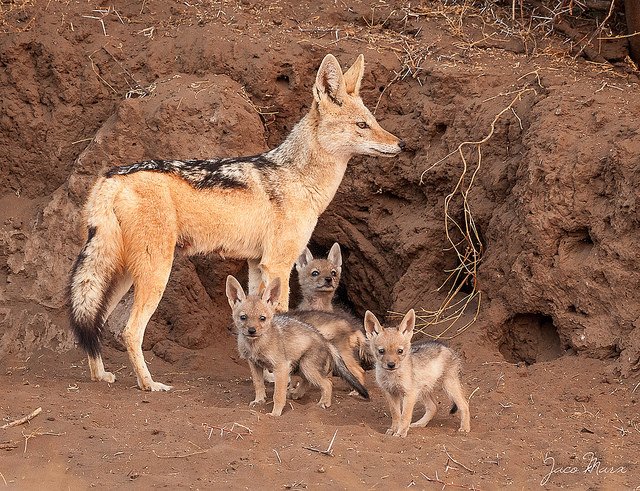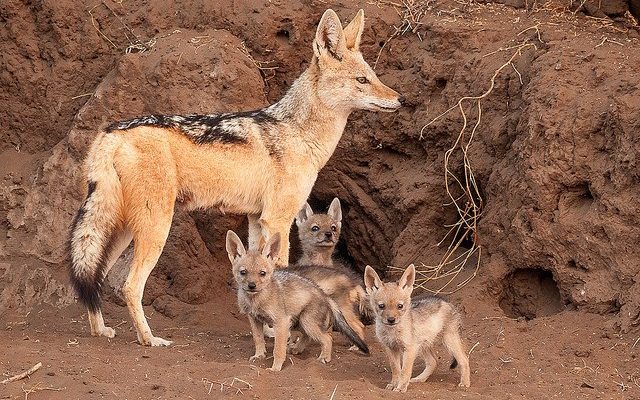
Black-backed jackals are typically shy and wary of humans. However, they can be spotted in various habitats across Southern Africa, often scavenging for food. If you find yourself in their territory, understanding their behavior is essential. Let’s break down some useful tips and insights on how to react when encountering these fascinating animals.
1. Know What to Expect from Black-Backed Jackals
Before we get into what to do if you see a black-backed jackal, it’s essential to understand their nature. These animals are known for their intelligence and adaptability. They often hunt in pairs or small packs and are highly social. Despite their potential for aggression when threatened, they generally prefer to steer clear of humans.
When encountering a black-backed jackal, you might notice its unique physical features—the sharp ears, slender body, and, of course, that striking black patch on its back. Their body language can tell you a lot about how they’re feeling. If a jackal seems curious or relaxed, it’s a good sign it doesn’t feel threatened. But if it stands tall with its ears perked up, it might be on high alert.
2. Stay Calm and Assess the Situation
So, you’ve spotted a black-backed jackal. The first thing to do? Stay calm. It can be easy to panic when you see a wild animal up close, but remember that most wildlife prefers to avoid confrontation just as much as you do. Take a moment to observe the jackal’s behavior.
Here’s what to look for:
- Is it alone or with others? A single jackal may be less intimidating than a group.
- Are there signs of aggression? A jackal that’s barking or growling may feel threatened.
- Is it looking for food? If it’s scavenging, it’s generally focused on finding a meal rather than bothering you.
You might be wondering how close you should get for a good look. It’s really best to keep your distance. Getting too close can provoke the jackal, especially if it feels cornered.
3. Make Yourself Known
Once you’ve assessed the jackal and it appears to be aware of your presence, it’s time to make yourself known. This doesn’t mean you should yell or wave your arms frantically—think of it more like introducing yourself politely.
Here’s how to do it:
– Stand tall: Hold your ground and avoid crouching down, which might make you look like prey.
– Make noise: Shout or clap your hands to get its attention without startling it too much. This helps remind the jackal that you’re there and not a potential meal.
– Wave your arms gently: This can help signal that you’re a human—not a threat but also not an animal they can approach.
By presenting yourself confidently, you can reduce the chance of the jackal feeling threatened.
4. Avoid Feeding or Attracting Jackals
One tempting aspect of being in the wild is the urge to connect with animals, but feeding a jackal is a big no-no. It might seem friendly, but offering food can lead to dangerous situations later. By associating humans with food, jackals might become bolder and approach people more often, which can create conflicts.
If you find yourself in a location where jackals are known to frequent, make sure to:
– Secure trash and food supplies: Keep your camping gear and food items safely stored away.
– Avoid leaving scraps: Even small food remnants can attract wildlife.
– Educate others: Share this knowledge with fellow travelers so everyone can enjoy wildlife responsibly.
By respectably managing your food sources, you can minimize the risk of attracting jackals and ensure a safer experience in the wild.
5. Know When to Back Away
If a black-backed jackal starts to move closer to you, it’s important to know when it’s time to back away. Trust your instincts—if the situation feels off, it’s okay to increase the distance between you and the jackal.
Here are signs it might be time to leave:
– Aggressive behavior: If the jackal is growling, barking, or displaying its teeth, it’s best to retreat calmly.
– Moving towards you: If it seems determined to approach, create space by slowly walking backward.
When retreating, do so carefully. Avoid turning your back on the jackal or running, as this can trigger a chase instinct. Instead, back away slowly while continuing to face the animal.
6. Understanding the Role of Black-Backed Jackals in the Ecosystem
As fascinating as they are, black-backed jackals play a crucial role in their ecosystems. They’re considered scavengers, helping clean up dead animals, and they also control populations of small mammals. Understanding their role in the environment can help you appreciate them more during your encounter.
For instance, by preying on rodents and insects, jackals help maintain balance in the ecosystem. Their presence indicates a healthy environment, which is something to value when you see one. This perspective can make your interaction feel less intimidating and more like a moment of wildlife appreciation.
7. Share Your Experience Safely
After your encounter with a black-backed jackal, consider sharing your experience with friends or fellow outdoor enthusiasts. It’s an opportunity to spread awareness about wildlife behavior and how to act responsibly in nature.
You can share your story by:
– Posting on social media: A quick photo and caption can inform others about encounters in the wild.
– Joining local wildlife discussions: Talking with community members or online groups can help others learn from your experience and provide valuable insights.
– Writing about it: If you enjoy writing, consider documenting your experience for a blog or travel journal!
Sharing your experience could inspire responsible wildlife interaction among your friends and community, helping to promote a better understanding of how to enjoy nature safely and respectfully.
To wrap it up, encountering a black-backed jackal can be a thrilling moment that quickly shifts to a learning experience about nature and wildlife. Remember to stay calm, assess the situation, and respect the animal’s space. The key takeaway? Enjoy the wonders of the wild, but always prioritize safety—for you and for the creatures that inhabit these areas. With a little knowledge and respect, you can enjoy your time in the great outdoors while coexisting harmoniously with wildlife.

